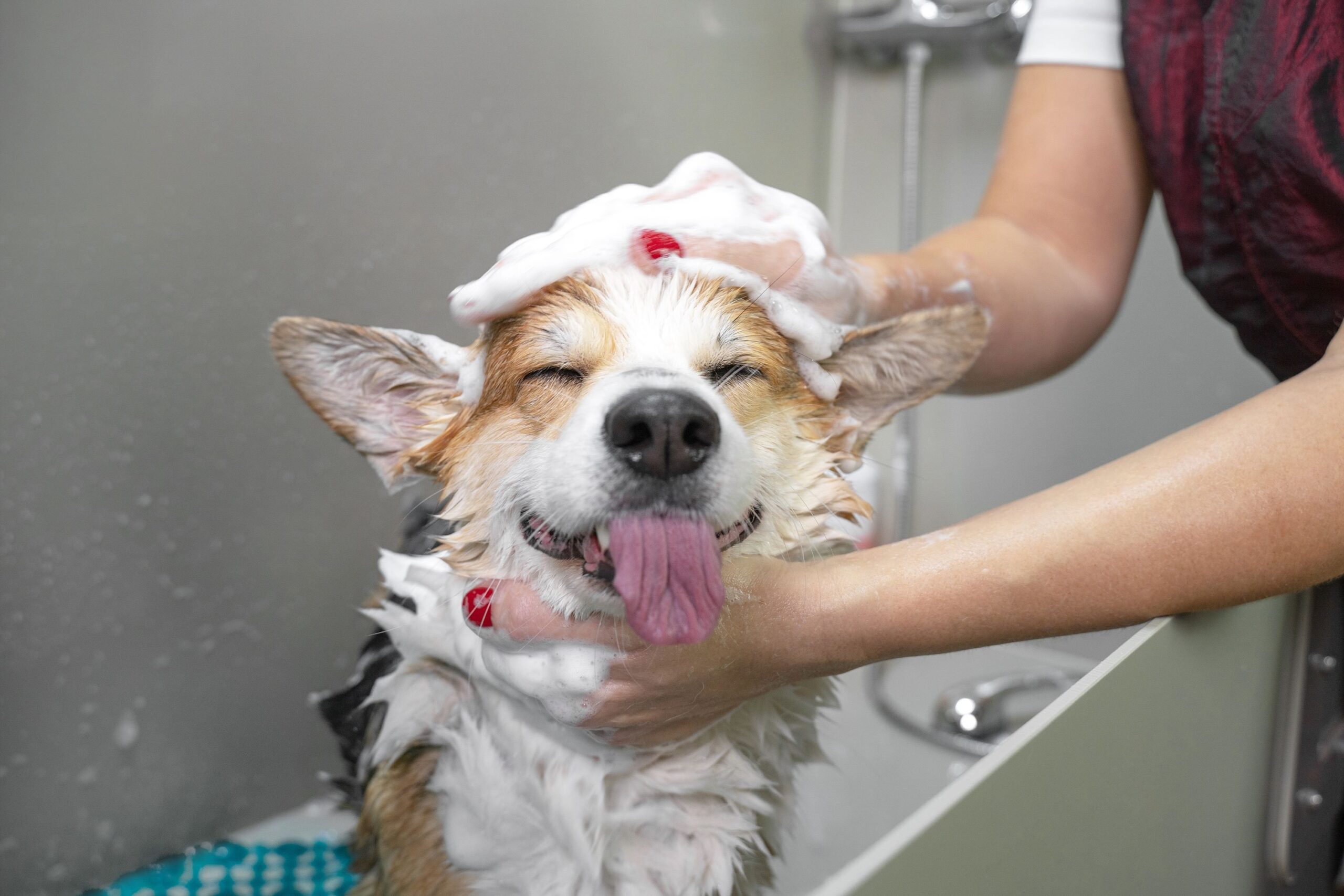
Key Takeaways
- Strategically Cater to Pet Owners: Standing out in the competitive rental market requires more than following trends. It requires strategic decisions like embracing pet-friendly policies. By understanding and catering to the needs of pet owners, landlords can differentiate themselves and attract a wider tenant base.
- Implement clear and Considerate Pet Policies: The foundation of a pet-friendly rental property is well-defined pet policies. These include guidelines, deposits or fees, and lease addendums. Such policies protect the property and instill a sense of security among pet owners and non-pet-owning tenants.
- Invest in Pet-Friendly Amenities: To make your rental property more appealing to pet owners, invest in pet-friendly amenities such as a bark park or a self-serve pet wash station. Additional improvements may involve installing durable flooring, creating designated pet zones, and designing outdoor spaces that enrich the overall pet-friendly experience.
- Effective Marketing Matters: It’s crucial to recognize that effective marketing plays a pivotal role in the success of your rental property, especially when catering to pet owners. Promoting your property as pet-friendly is necessary to attract the ideal tenants.
- ROI of Being Pet-Friendly: Landlords can anticipate a positive return on investment by embracing pet-friendly policies. This can be increased occupancy rates, long-term tenant retention, higher rental rates, and a competitive edge in the rental market. Such benefits reassure landlords about the profitability of being pet-friendly.
- Open Communication and Responsible Pet Ownership: Building positive tenant-landlord relationships through open communication and encouraging responsible pet ownership is key to maintaining a harmonious rental community. Addressing concerns promptly and fairly fosters a positive rental experience for all tenants.

Introduction: The Growing Demand for Pet-Friendly Rentals
In the ever-evolving world of real estate, landlords who adapt to changing tenant preferences gain a competitive edge. One significant trend that has gained momentum in recent years is the increasing demand for pet-friendly rental properties. In this article, we will explore how landlords can embrace this trend, differentiate themselves in the rental market, and reap the benefits of being pet-friendly.
Understanding the Pet Owner Perspective
To truly excel in the pet-friendly rental market, it’s crucial to understand what pet owners are looking for in a rental property. Pet owners often seek specific features and amenities that cater to their furry companions. By comprehending their needs and expectations, landlords can tailor their offerings accordingly.
Pet owners often face challenges when searching for rental properties accommodating their furry companions. Highlighting your property as pet-friendly makes it stand out in the market. This creates a sense of desirability among pet owners willing to pay a premium for a place that welcomes their pets.
Creating Pet-Friendly Policies
A critical aspect of becoming pet-friendly is establishing clear and reasonable pet policies. This includes setting guidelines, determining pet deposits or fees, and drafting pet-friendly lease addendums. These policies not only protect the property but also provide reassurance to both pet owners and non-pet-owning tenants.
Making Your Property Pet-Friendly
Landlords can make their properties more appealing to pet owners by taking steps to pet-proof apartments and offering amenities that enhance the pet experience. From durable flooring to designated pet areas and pet-friendly landscaping, there are various ways to create a welcoming environment for pets and their owners.
Marketing Your Pet-Friendly Rental
Crafting compelling listings that highlight the pet-friendly aspects of your property is essential. You can effectively reach your target audience by showcasing nearby pet-friendly attractions and utilizing social media and pet-focused platforms.
Building Positive Tenant-Landlord Relationships
Communication is key when dealing with pet-related issues. Landlords should establish open lines of communication and address concerns promptly. Encouraging responsible pet ownership ensures harmony among tenants and fosters a positive rental experience.
The Pet-Friendly Advantage: ROI for Landlords
Embracing a pet-friendly approach can yield a range of benefits for landlords. Increased occupancy rates, reduced vacancy periods, long-term tenant retention, higher rental rates, and a competitive edge in the market are among the returns on investment that pet-friendly policies can offer.
Debunking Common Pet-Related Myths for Landlords
In rental properties, myths and misconceptions about allowing pets have persisted for years, often leading landlords to hesitate when considering pet-friendly policies. However, a closer examination of these myths reveals that many are unfounded, and landlords can confidently debunk them to make informed decisions.
Myth 1: Pets Always Cause Property Damage
One of the most common myths is the belief that pets inevitably lead to extensive property damage. While it’s true that accidents can happen, responsible pet owners take measures to prevent damage. Furthermore, pet-friendly policies often include pet deposits or fees that can cover any unexpected issues. By setting clear expectations and conducting regular property inspections, landlords can minimize the risk of damage.
Myth 2: Allergies Will Be a Constant Issue
Another prevalent myth is that allowing pets will lead to allergic reactions among other tenants. While some individuals may have allergies, it’s important to note that pet-friendly policies can coexist with considerations for allergenic tenants. Proper cleaning and maintenance protocols and designated pet-friendly zones within the property can help address this concern and create a balanced living environment for all tenants.
Myth 3: Pets Are Noisy and Disruptive
The notion that pets are inherently noisy and disruptive is not entirely accurate. Many well-trained pets are quiet and well-behaved. Landlords can establish pet-friendly guidelines that include rules about noise levels and behavior, ensuring that pets and tenants can coexist harmoniously. Responsible pet ownership and respectful behavior should be encouraged and enforced.
Myth 4: Pet Owners Are Unreliable Tenants
There’s a misconception that pet owners make unreliable tenants, which often stems from concerns about pet-related damage and liabilities. However, responsible pet owners are often just as reliable as non-pet-owning tenants. Landlords can assess tenant reliability based on rental history, references, and background checks, regardless of whether they own pets.
Myth 5: Insurance Will Be an Issue with Pet-Friendly Properties
Some landlords worry that insurance premiums will increase significantly when they allow pets. While it’s true that insurance considerations are essential, many insurance providers offer coverage options that accommodate pet-friendly rentals. Landlords can mitigate this concern by researching and selecting the right insurance policies.
Myth 6: Pet-Friendly Properties Attract Undesirable Tenants
A common myth is that pet-friendly properties will attract less desirable tenants who may not take care of the property. However, the decision to own a pet does not necessarily correlate with the quality of a tenant. Responsible pet owners can be excellent tenants who value a pet-friendly living environment and are committed to maintaining the property.
Conclusion: Embracing the Pet-Friendly Advantage
In conclusion, the pet-friendly advantage is more than a trend; it’s a strategic move that can set landlords apart in the competitive rental market. By understanding the unique needs of pet owners, implementing clear policies, and marketing effectively, landlords can attract more tenants and create a thriving and harmonious rental community.










